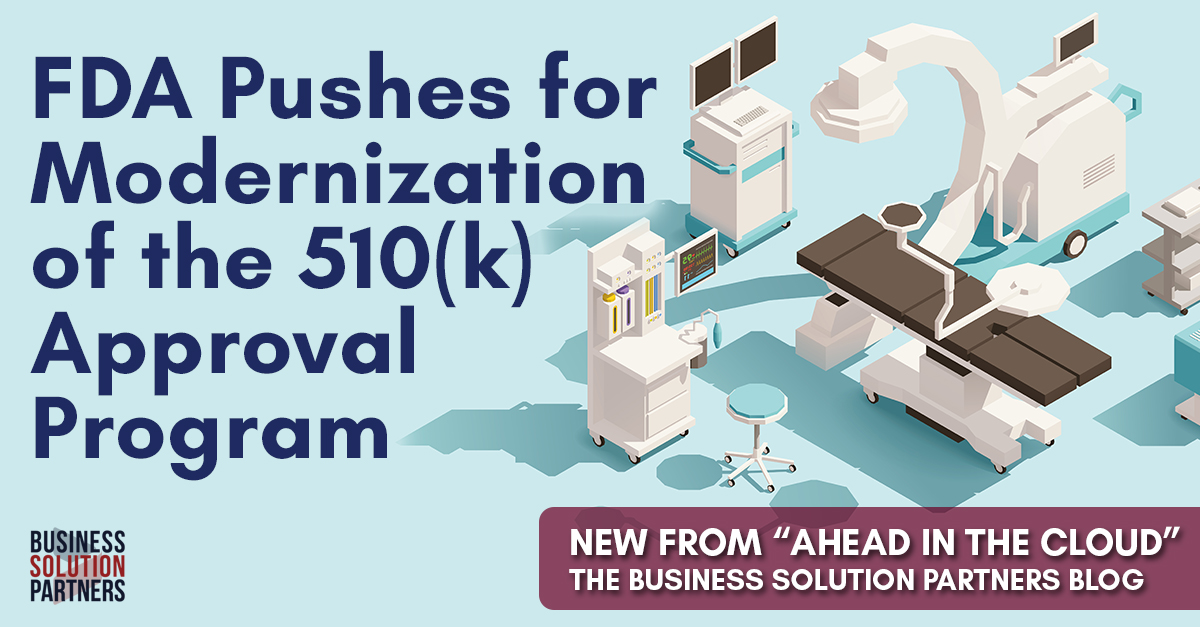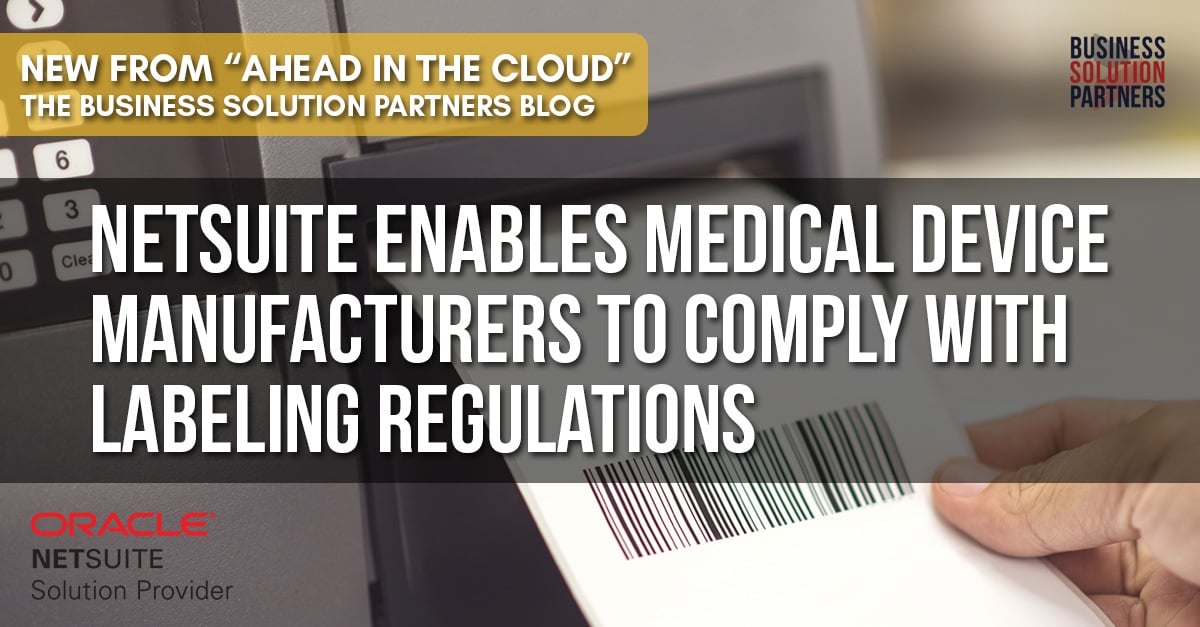NetSuite Enables Labeling Compliance For Medical Device Manufacturers
The primary objective of Medical Device labeling is to ensure that patients in need, and practitioners providing care, can access clear, accurate and...
3 min read
 Craig Cook
:
Dec 13, 2018 12:23:00 PM
Craig Cook
:
Dec 13, 2018 12:23:00 PM

On November 26, 2018, the FDA announced changes to its 510(k) clearance pathway for medical devices. The statement from FDA Commissioner Scott Gottlieb, M.D. and Jeff Shuren, M.D., Director of the Center for Devices and Radiological Health (CDRH), proposes to modernize the 42 year old method for evaluating the safety and effectiveness of most approved medical devices.
The mandate came after the International Consortium of Investigative Journalists (ICIJ) publicized a scathing report on the medical device field. In that report, the ICIJ linked 1.7 million injuries and 83,000 deaths to adverse medical device events reported to the FDA during a 10 year period.
Currently, the FDA regulates more than 190,000 distinct medical devices manufactured by more than 18,000 companies. It approves, on average, 12 new or modified medical devices daily. The majority of these FDA approvals are won via The 510(k) Pathway.
Historically, a majority of Class II medical devices, and many Class III medical devices could find a rapid path to market through 510(k). Devices in this category include x-ray machines, endoscopes, surgical lasers, and all others for which moderate to high patient risk is posed.
Without the 510(k) avenue, medical device manufacturers would be compelled to subject all products to rigorous pre-market approval. This time consuming and expensive process would typically require both lab testing and human trials.
The 510(k) pathway allows a medical device manufacturer a method to establish FDA required safety and effectiveness in a manner other than rigorous premarket approvals - by drawing a substantial equivalence to an existing, pre-approved device being sold on the open market.
A critical and defining component of the 510(k) approval pathway is its acceptance of a premarket notification in place of a premarket approval.
Premarket notification is typically nothing more than a letter to the FDA that comports to a recitation of the information that 21 CFR 807(E) requires - stating that the subject medical device is substantially equivalent to an approved medical device already in the market.
There are countless devices that successfully leverage 510(k) to shorten the path to market. And there are compelling reasons why this is good for both patients and practitioners alike. In the rapidly advancing global healthcare ecosystem, breakthrough design and technology reaching patients in need can literally mean the difference between life and death.
But there is a downside to the 510(k) program; one highlighted by the recent ICJI report, 2018 Netflix documentary "The Bleeding Edge," and countless other journalistic efforts* spanning decades.
Detractors of the 510(k) pathway argue, with a significant volume of statistical data to back up their claims, that devices approved through the 510(k) process are failing and/or subject to recall at a disproportionate rate.
Reports of deaths or adverse events from medical device failure rise further when these 510(k) approvals draw substantial equivalence to aging technologies with decades old approvals.
In 2017, the FDA (via the CDRH) cleared 3,173 devices through the 510(k) program. This represented 82% of the total number of approved medical devices in the calendar year. The FDA has estimated that nearly 20% (approx. 630) of these 510(k) approvals draw substantial equivalence to technology that is at least 10 years old.
In early 2019, the FDA intends to finalize guidance regarding the 510(k) program. It wants to allow manufacturers of well understood types of medical devices to be able to rely on objective safety data and performance criteria that are no more than 10 years old when establishing instances of substantial equivalence.
The FDA wants to establish a contemporary safety and effectiveness baseline, once which can be updated as technologies advance and as the manner in which substantial equivalence continues to evolve. In doing so, their ultimate goal is to discourage reliance upon outdated technologies.
The FDA intends to rename this pathway as the Safety and Performance Based Pathway.
*Additional Resources:
This is not a new topic for the industry. With little effort, we've found articles debating the 510(k) process dating back several decades. Below, please find several compelling articles from 2011 to the present.
2/15/11: Medical Device Recalls Come From Devices Through The 510(k) Process
10/3/18: Two More Studies Say FDA Is Bad At Regulating Medical Devices
8/20/18: FDA Medical Device Safety Action Plan: Good or Bad for Medtech?
And here are a few more articles from Business Solution Partner's Blog for Medical Device Manufacturers:

The primary objective of Medical Device labeling is to ensure that patients in need, and practitioners providing care, can access clear, accurate and...

A nearly year-long international investigation into medical device safety by 252 journalists from 36 countries representing 59 media partners has...

Aging populations around the world have underpinned the growth in the medical device industry in recent years. KPMG forecasts that this trend will...